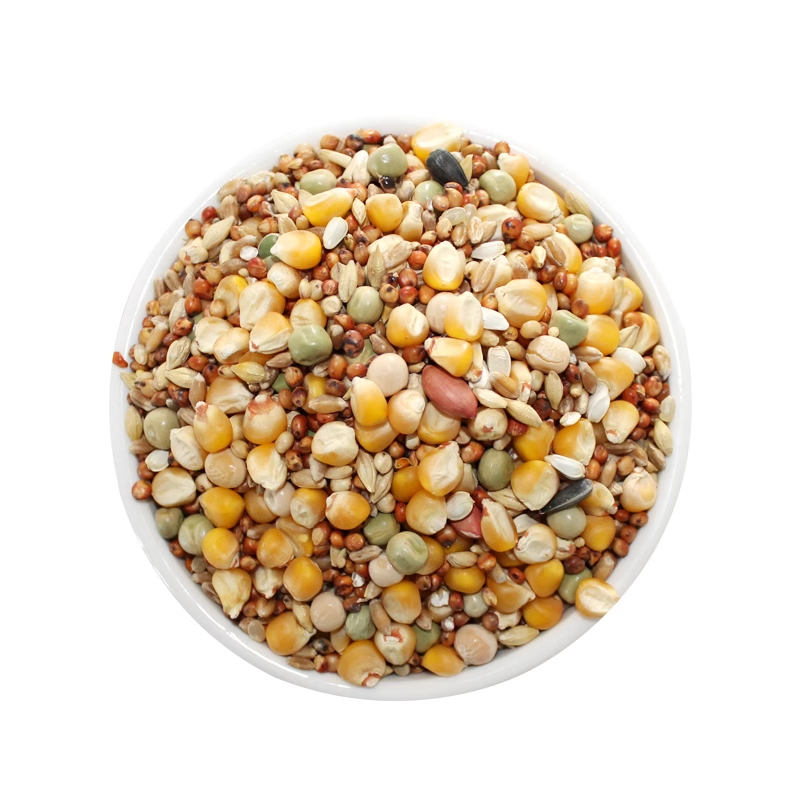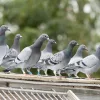
High Quality Feed for Racing Pigeons Grains & Proteins
High Quality Feed for Racing Pigeons Grains & Proteins
In the world of pigeon racing, success doesn’t begin at the starting line it begins in the feed scoop. Your pigeons’ performance is directly tied to the quality of their nutrition. A balanced mix of energy-rich grains and high-quality protein boosters lays the foundation for strong muscles, sharp instincts, rapid recovery, and race-winning stamina.
If you’re wondering what goes into building an elite racing pigeon diet, this guide is for you. We’ll explore what makes a feed “high-quality,” which grains and proteins to include, when to use them, and how to fine-tune the mix based on your birds’ training cycle and season.
Why High-Quality Feed Matters in Racing Pigeons
Racing pigeons are high-performance athletes. During training and races, they burn immense amounts of energy and place their bodies under significant physical stress. To meet those demands, their feed must deliver:
-
High caloric density for fuel
-
Essential amino acids for muscle repair
-
Micronutrients for immunity and metabolism
-
Digestibility for efficient absorption
Without quality feed, pigeons become prone to fatigue, weakened immunity, respiratory issues, and poor homing performance.
The Two Core Pillars: Energy and Protein
When formulating a top-tier feed, think in two categories:
-
Energy Grains – Fuel flight and provide stamina.
-
Protein Sources – Repair muscles and build tissue.
Let’s break each one down.
Top Energy Grains for Racing Pigeons
1. Maize (Corn)
A staple in most racing mixes, maize is rich in carbohydrates and calories. It’s a slow-burn energy source ideal for longer flights.
Tip: Use red or orange maize, as they contain more carotenoids and antioxidants.
2. Sorghum (Red Milo)
Sorghum is another carb-rich grain with medium energy levels. It’s light on the gut and often used during early training phases.
Caution: Not all pigeons like it. Soak or sprout to improve palatability.
3. Barley
Excellent for gut health and fiber, barley helps manage digestion and keep the crop in top shape. It’s best used during rest or non-racing periods due to its low energy density.
4. Wheat
Wheat offers a modest energy boost and is easy to digest. It works well in daily maintenance diets but shouldn’t dominate the mix during racing season.
5. Safflower
A favorite for building body mass and adding shine to feathers. It’s high in fat and should be introduced gradually during race buildup.
6. Rice (Paddy Rice or Brown Rice)
Light and easily digestible, rice provides a quick energy burst. Great for post-race recovery or as a training treat.
Top Protein Boosters for Racing Pigeons
1. Peas (Green, Yellow, or Maple)
Peas are a foundational protein source in pigeon diets. They’re packed with essential amino acids for muscle growth and recovery.
Pro Tip: Use a mix of different types to avoid amino acid imbalances.
2. Lentils
Smaller and more digestible than peas, lentils add variety and protein without overburdening digestion.
3. Vetch
High in protein but should be used moderately. Vetch is often added during winter or post-race recovery.
4. Rapeseed and Linseed
Great for their fatty acid profiles and protein content. These seeds also help support shiny plumage and strong skin.
5. Sunflower Seeds (Dehulled)
These provide fats and proteins but should be given in moderation due to their richness.
6. Commercial Protein Pellets
Many racing pigeon fanciers now use extruded protein pellets (14–18% protein) designed specifically for avian digestion. These are ideal for supplementing during heavy training or post-race rebuilding.
How to Balance Grains and Proteins in Your Feed Mix
A good rule of thumb is:
-
Maintenance diet: 60% energy grains, 40% protein
-
Training diet: 50/50 or 55% energy, 45% protein
-
Racing build-up diet: 65–70% energy, 30–35% protein
-
Recovery diet: Add soft foods and high-protein pellets or soaked grains
Seasonal Adjustments to Feed
Winter (Rest Period)
-
Focus on digestive health and immune support.
-
Use more barley, wheat, and greens.
-
Lower protein to avoid fat gain.
Spring (Molt Completion & Training Start)
-
Slowly introduce peas, safflower, and corn.
-
Begin building muscle and stamina with a balanced feed.
Summer (Race Peak)
-
Increase high-energy grains like maize and safflower.
-
Add B-vitamin-rich supplements for nerve and muscle support.
Fall (Post-Race Recovery)
-
Shift to lighter grains.
-
Use protein-rich feeds to rebuild muscle and recover lost weight.
Enhancing Feed with Natural Additives
High-quality feed can be even more effective when supported with the right natural additives:
1. Oregano Oil
Antibacterial and antiviral, it keeps gut health in check.
2. Garlic Extract
Supports respiratory health and improves circulation.
3. Apple Cider Vinegar
Balances gut pH and enhances digestion. Add 5–10 ml per liter of drinking water.
4. Probiotics and Prebiotics
Restore gut flora, especially after antibiotic treatments or races.
5. Multivitamins and Electrolytes
Support recovery, immunity, and hydration during the heat or racing stress.
Feeding Schedule for Peak Performance
| Time of Day | Feeding Goal | Recommended Feed Type |
|---|---|---|
| Morning (Training Days) | Light energy for loft or toss | Light mix: wheat, rice, lentils |
| Afternoon | Muscle recovery | Protein-rich mix: peas, pellets |
| Evening (Rest Days) | Maintenance & digestion | Balanced grains with herbs |
| Post-Race | Rapid recovery | Soaked peas, electrolytes, soft food |
Signs of a Good Feed Program
* Glossy, tight feathers
* Bright eyes and alert posture
* Consistent droppings
* Strong wing tension
* Fast recovery after tosses
If your pigeons show signs of sluggishness, poor feather condition, or disinterest in training, the feed may be unbalanced or lacking in essential nutrients.
Pitfalls to Avoid
-
Overfeeding maize Leads to fat buildup.
-
Too much protein year-round Can burden the kidneys.
-
Dirty or moldy grains Causes fungal infections or toxicity.
-
Rapid changes in diet Leads to digestive upset.
Always introduce new grains or supplements gradually and observe how your birds respond.
Where to Find High-Quality Feed and Supplements
Not all feed mixes are created equal. Look for trusted sources that specialize in pigeon racing nutrition, such as:
-
Specialty racing feed mills with fresh, mold-free grain
-
Local breeders’ co-ops for custom blends
You can also create your own mix using a seed scale and a clean mixing tub to match your training goals precisely.
Final Thoughts: Feed Like a Champion
High-quality feed isn’t just about filling the crop — it’s about fueling purposefully. Each grain and protein source plays a role in your pigeons’ ability to perform, recover, and stay healthy through the season.
By tailoring your grain-to-protein ratio and enhancing it with natural supplements, you’re setting your birds up for consistent returns and podium finishes.
Start with clean, balanced feed. Support it with the right supplements. And adjust it to meet your training rhythm — because champions are built grain by grain, scoop by scoop.

